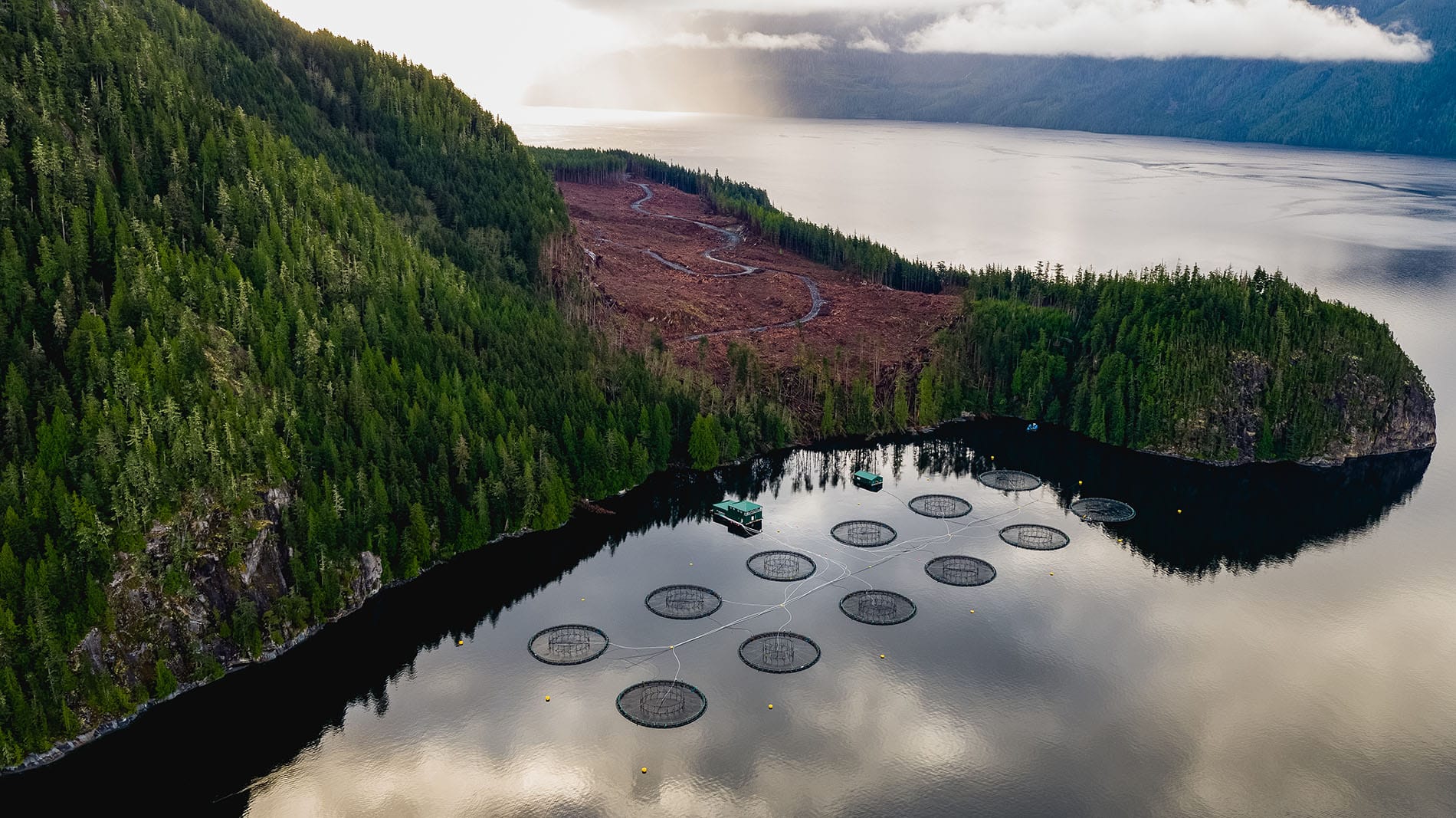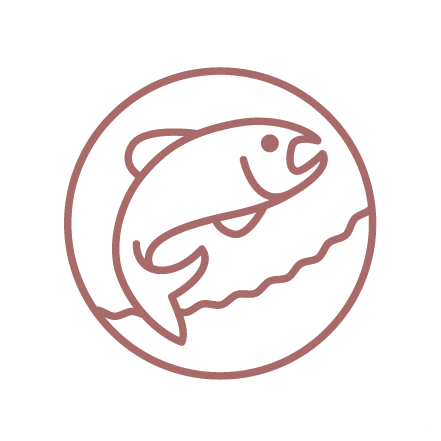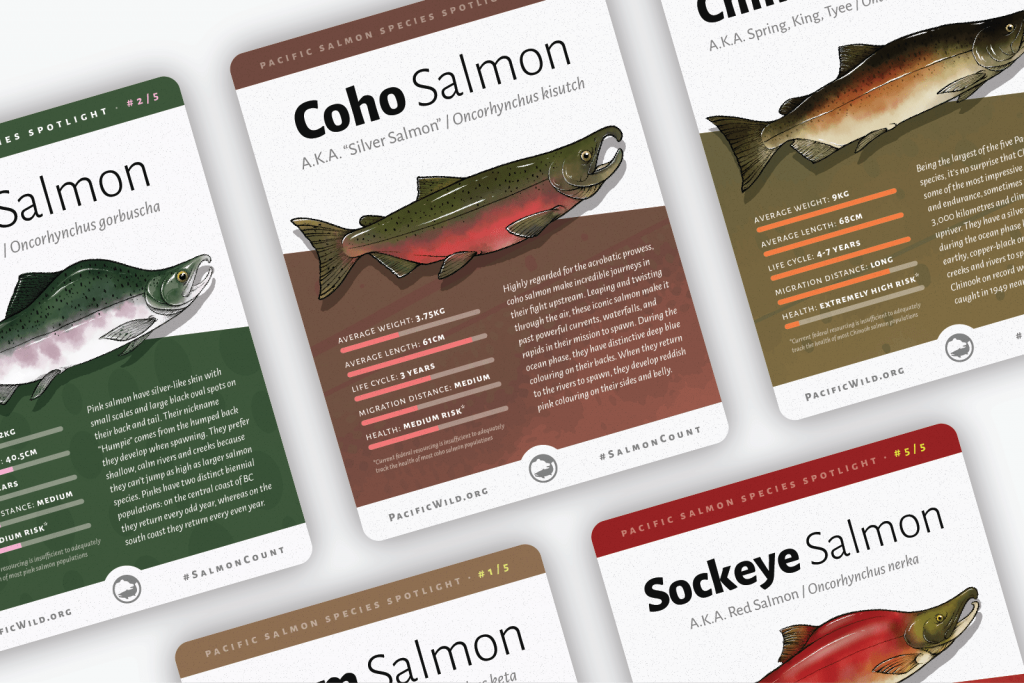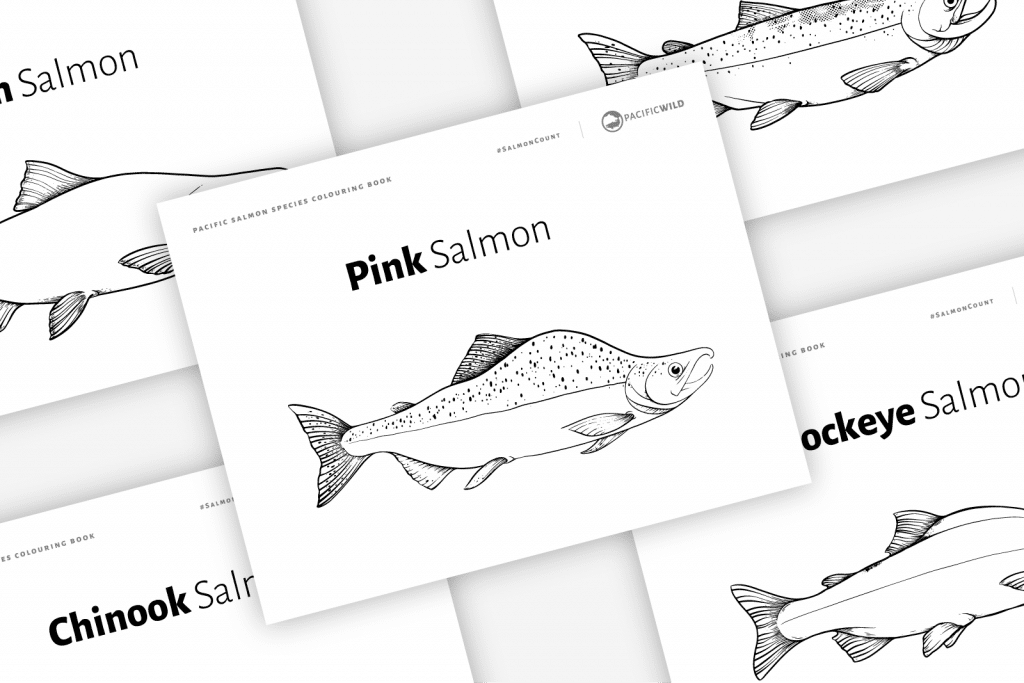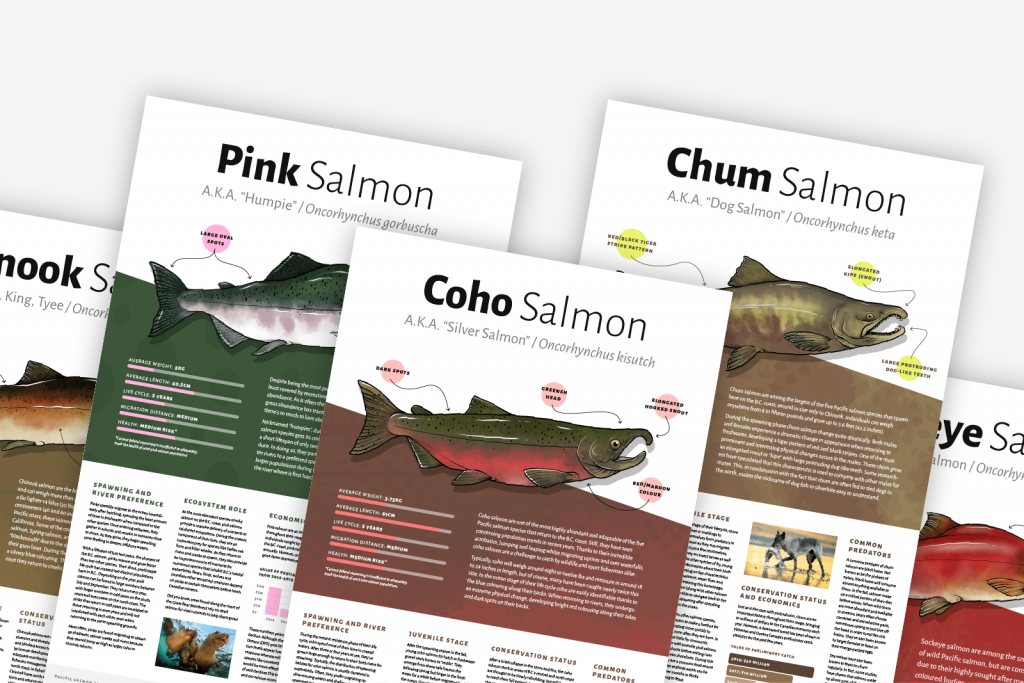Fish Farms Out
There is an urgent need to hold DFO accountable to their commitment to remove open-net salmon farms by 2025. Inaction poses a severe threat to the survival of wild salmon in B.C.
Why Remove Fish Farms?
Wild salmon are a foundational species and the lifeblood of the B.C. coast, connecting and feeding the ocean and forest, but open-net salmon farms put wild salmon at risk. Parasites, pathogens and pollutants are only some of the reasons why research has shown wild salmon and open-net salmon farms are incompatible with each other.
What affects wild salmon, affects many other species too because of their life cycle and their place in the food web. Pacific salmon (Oncorhynchus spp.) are anadromous, meaning they are born in freshwater, migrate to the ocean where they spend the majority of their lives before making a return to freshwater for spawning. Each spring, young Pacific salmon swim from rivers to the sea, where they grow and feed killer whales, seals, sea lions, and a multitude of marine animals. In autumn, bears, wolves, eagles, gulls, and other wildlife gather in estuaries and along rivers to feast on adult salmon returning to spawn. It is their lifecycle that intimately connects them to both marine and terrestrial food chains, and what makes them a critical connection point in the greater food web.
The end of the salmon life cycle brings an essential surge of ocean-derived nutrients, like Nitrogen-15 (N15), to the trees that line the banks of each river and to the mycorrhizal networks below ground. Marine isotopes transported by the bodies of salmon are found in plant tissue along salmon rivers, all the way to the tops of ancient trees. The watersheds fed by salmon often have a higher abundance and diversity of insects, birds, and play host to iconic species such as bears and wolves.
salmon feed our coast
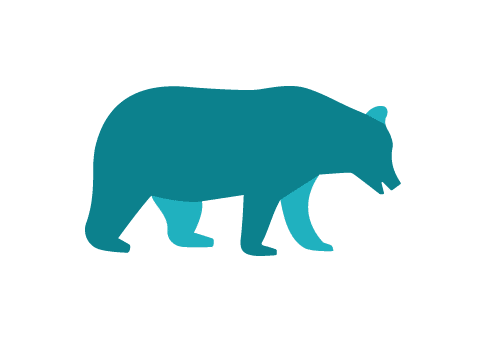
land mammals
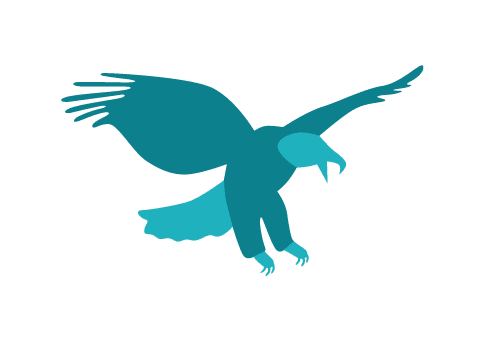
birds
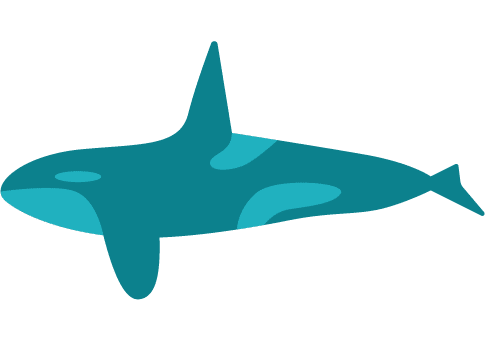
marine mammals
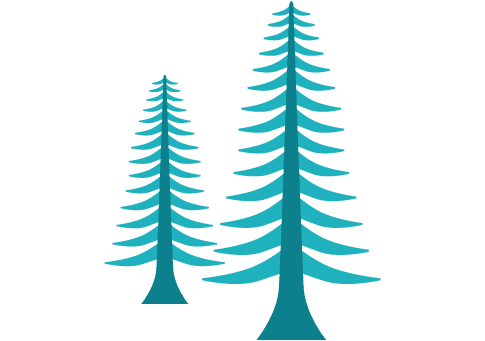
forests
Quintessential to coastal cultures and traditions, human communities rely on salmon for sustenance, livelihoods, and cultural practice. They are also a cornerstone of B.C.’s tourism industry, a highlight of local cuisine, and are an essential prey item for much of the wildlife that attracts so many visitors to the coast. Directly or indirectly, we all rely on wild salmon.
Despite this, B.C. stands alone on the Pacific Coast of North America in putting the economic interests of multinational corporations ahead of wild salmon conservation. In contrast, the state waters of Alaska, Washington, Oregon and California are free from commercial open-net salmon farms. Both Alaska and California have taken progressive steps by passing legislation to ban open-net farms entirely. With the world’s longest coastline, Canada should strive to be a global leader in marine conservation instead of falling behind.
dive deeper into the importance of salmon
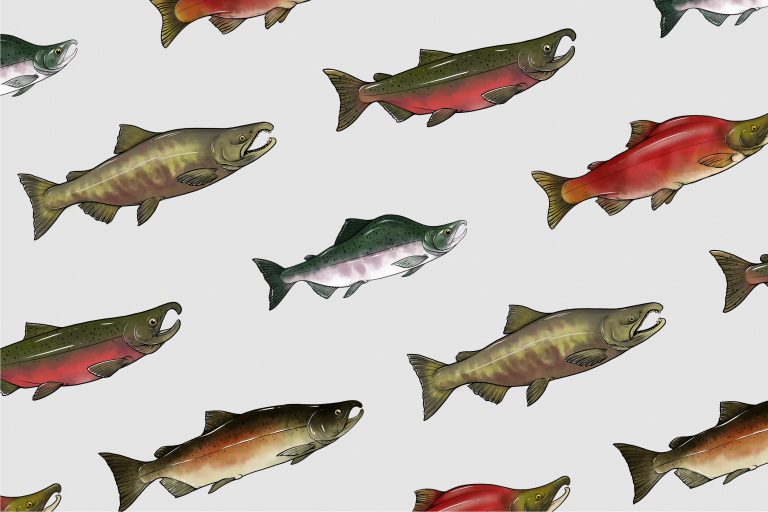
Pacific Salmon Species Spotlight
Our complete overview of the five Pacific salmon species, covering appearance, ecosystem roles, spawning preferences, economics and conservation status.
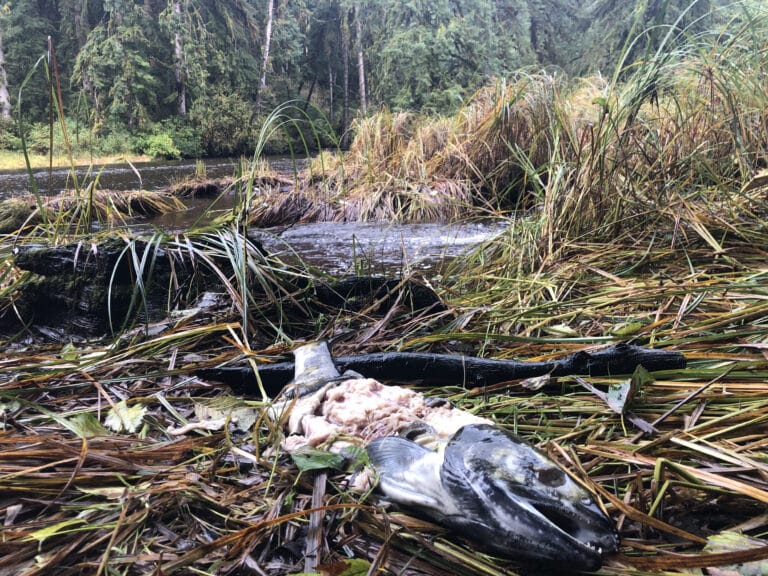
Salmon Feed Forests
Salmon feed forests? Yep. Salmon feed killer whales, sea lions, bears, eagles and wolves which decompose into fertilizer for forests.
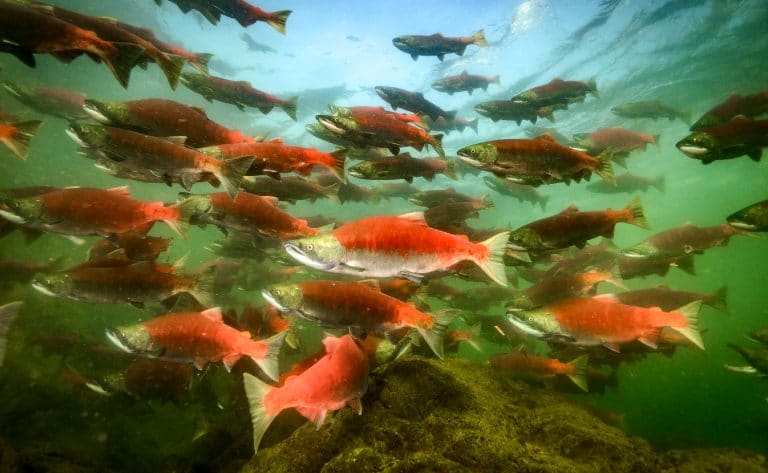
Salmon: A Foundational Species
The enormous benefit that salmon provide for countless species and the overall health and function of the coast is what makes salmon a foundational species.
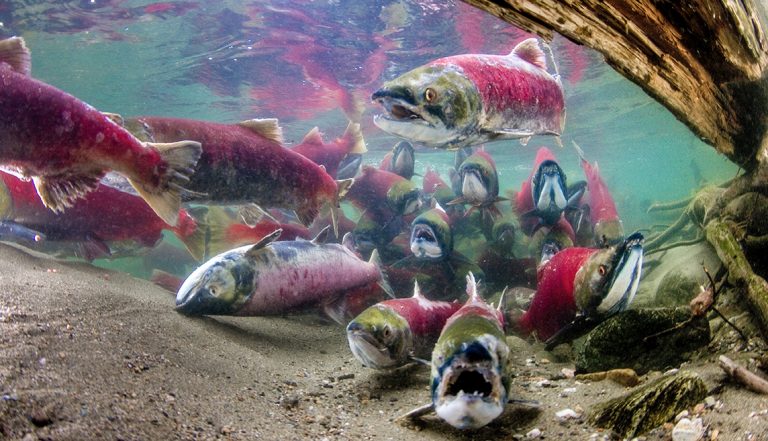
Ten Reasons We Want Fish Farms out of B.C. Waters
On June 20th, twenty-two fish farms on the B.C. coast are up for tenure renewal, despite a growing resistance from First Nations, B.C. and international citizens. There are over 100 open-net cage salmon farms along on the B.C. coast, 98% owned by Norwegian companies, representing highly concentrated sources of waste, disease, and parasites that threaten […]
The Salmon Crisis
The survival of wild salmon is under immense pressure in B.C.. Human development and natural resource extraction – like logging – has damaged or destroyed large swaths of freshwater spawning grounds, essential for the success of salmon. As climate change drives marine ecosystems into uncharted waters, the survival of many species of Pacific salmon is becoming increasingly uncertain.
Scores of salmon runs are at historic lows with many species identified as Endangered, Threatened, or a Species of Special Concern under the Species at Risk Act. In 2018, the Committee on the Status of Endangered Wildlife in Canada (COSEWIC) found that 50 percent of Chinook salmon populations in Southern B.C. were at-risk. Today, over 80 percent of the Fraser River watershed’s unique Chinook populations are considered to be at risk of extinction. Additionally, the health of the critically endangered Southern Resident killer whales is also linked to the abundance of Fraser Chinook, as it is their primary food source.
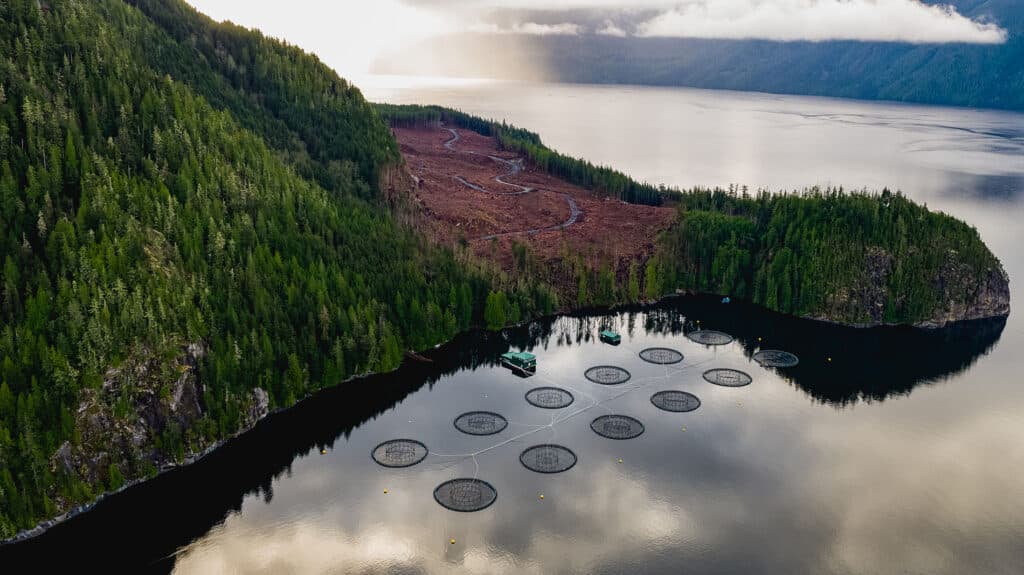
For more than a decade, federal legislation, commissions, policies and court rulings have spelled out the threats to wild salmon and the necessary changes and measures to protect them, yet few changes have been implemented. Many salmon populations continue to decline at an alarming rate.
There has never been such a sense of urgency over the state of salmon on the B.C. coast.
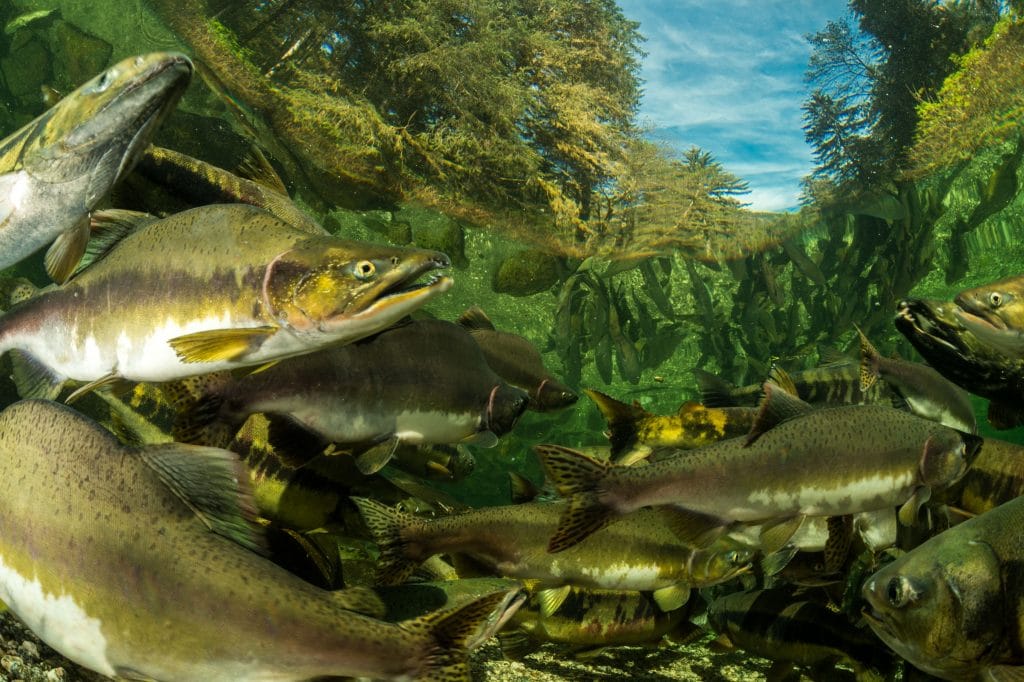
discover why salmon are in trouble
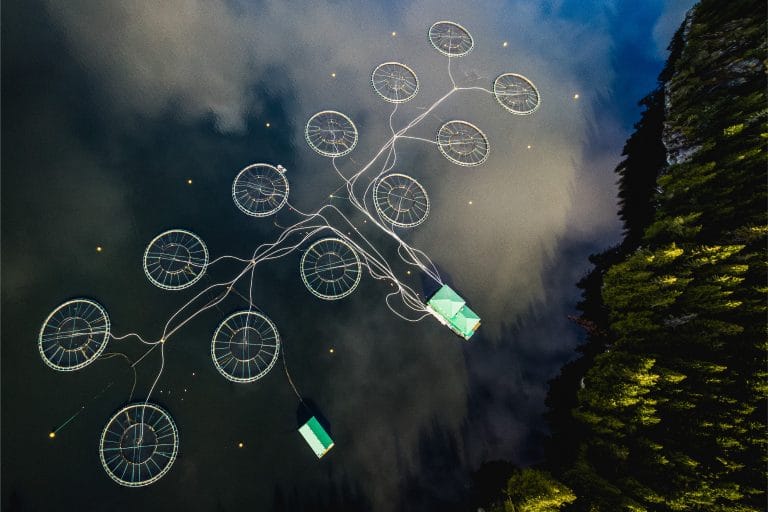
Top Threats to Pacific Salmon
Wild salmon are essential in ensuring the health of the coastal ecosystem in British Columbia, and the need for genetically diverse runs is critical as we face climate change — yet salmon continue to face human-caused threats at every turn.

Blind Management, Uncounted Rivers
The very foundation of salmon stewardship requires the annual monitoring of thousands of watersheds in coastal B.C. in order to assess the health and abundance of spawning salmon, yet in the last 15 years, DFO funding for salmon escapement programs has been cut by over 60%.
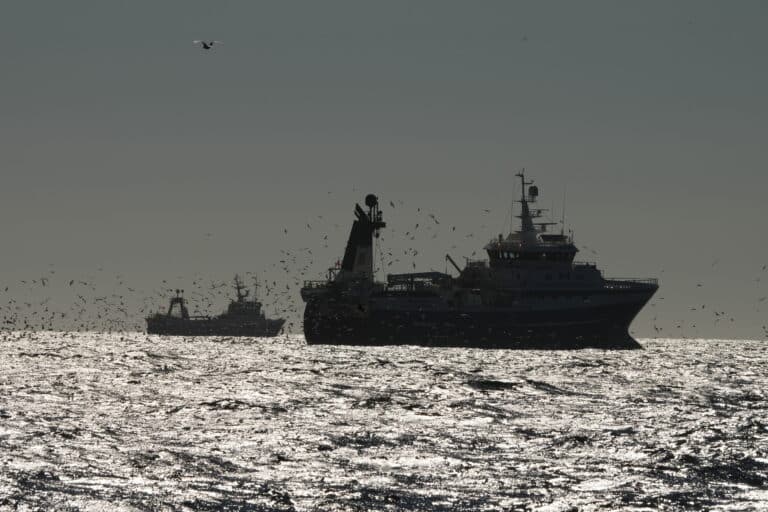
Press Release: Alarming Waste of Salmon by Trawl Fishery Revealed in DFO Report
Over 18,000 wild salmon – primarily Chinook – caught, killed and discarded in British Columbia trawl fishery in just five months.
fish farm failure
Open-net salmon farms are large cages or nets rearing hundreds of thousands of fish in coastal waters. These farms cannot contain or control the outflow of waste from their facilities, releasing deadly parasites, pathogens and pollutants into B.C. waters. Typically located in the middle of wild salmon migration routes and rearing grounds, these farms create a high-risk environment to juvenile wild salmon migrating out to sea and to adult fish returning to spawn.
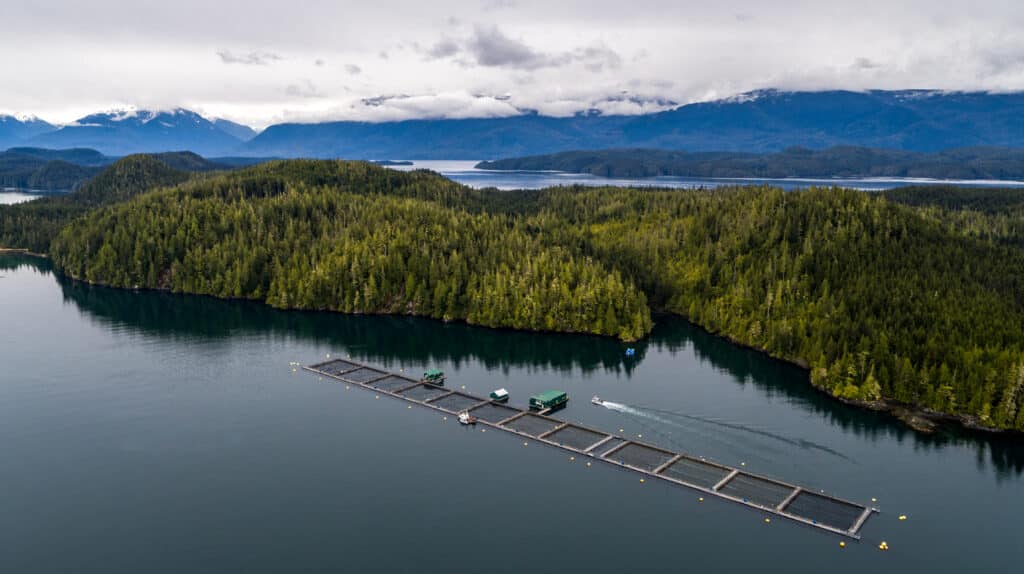
A wide breadth of peer-reviewed research indicates that wild salmon and open-net fish farms are incompatible with one another. The impacts of parasites and pathogens transmitted from farmed salmon to wild salmon, as well as pollutants from open-net farms, negatively affect the health of wild Pacific salmon. The removal of open-net farms is a controllable action the government can take to protect dwindling salmon runs.
In addition to mounting environmental evidence damning the use of open-net fish farms, they have very little social license to operate. For nearly two decades the Union of British Columbia Indian Chiefs (UBCIC) have expressed a zero tolerance policy for open-net fish farms in B.C. waters, stating that:
“Fish farms only serve to further endanger salmon stocks which are already fighting for survival. When our salmon, oolichan, shellfish and other marine resources die or are attacked, our Peoples are attacked.”
– UBCIC, 1998
In 2018, a poll from Mainstreet Research found that nearly 75 percent of B.C. residents support an immediate ban on net-pen salmon farms. Today, social license for open-net farms has eroded further. Second only to declining fish stocks, a 2023 survey found that open-net fish farms are the second highest ranked threat concerning B.C. residents that affects the B.C. coast and coastal communities. Approximately 90 percent of participants expressed concern about open-net fish farms in B.C.
The Way Forward
In 2019, the federal government mandated that all open-net fish farms will be removed from B.C. waters, transitioning to closed containment systems by 2025. By transitioning to land-based closed containment farms, B.C. will be able to protect wild Pacific salmon, safeguard the aquaculture industry and attract investment to create more environmentally sustainable jobs for B.C. coastal communities. Today, over 120 First Nations in B.C. have shown their support for land-based closed containment fish farms and the removal of open-net farms from B.C.’s oceans to protect wild salmon for generations to come. There are already several successful land-based closed-containment Recirculating Aquaculture Systems (RAS) operating within B.C.
With less than two years left before the 2025 deadline there are still dozens of open-net salmon farms active in B.C.. Coast-wide licenses for open-net salmon farm facilities are set to expire on June 30, 2024.
Join us in holding the government accountable in upholding their responsibility for the survival of wild Pacific salmon, stand by their promises to First Nations, advocate for our ecosystems, and support the continued sustainable livelihoods of fishers and coastal communities!
printable activities & educational tools
external resources
This interactive tool displays data collected on Pacific salmon species and their habitats – a project by the Pacific Salmon Foundation’s Salmon Watersheds Program.
As part of his duties as Commissioner, in 2012 Bruce Cohen completed an investigation into the status of the Fraser River Sockeye Salmon. This report outlines his recommendations to improve the future sustainability of the species by a deadline of September 30th, 2020.
In 2002, Brian Harvey and Misty MacDuffee of Raincoast Foundation published a report addressing the growing concerns in British Columbia’s coastal communities about the declines in local salmon runs.
